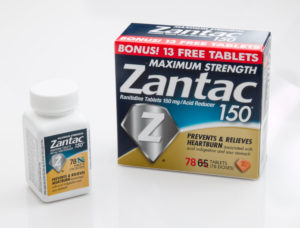Rx for Parkinson’s: Patience and safe modifications
Caring for residents with Parkinson’s disease (PD) requires an understanding of the unique ways in which the disease affects their muscles and nervous system, as well as the critical importance of precise medication management. Most caregivers are familiar with the symptomatic “shakes,” but those with PD often have challenges in processing information and getting their bodies to obey movement commands, too.
“We have one client who describes her symptoms as standing in a bucket of wet cement,” says Jane Geiger, director of marketing at Parkinson’s Specialty Care (PSC) of Golden Valley, Minn. PSC is a two-pronged program dedicated to the wellness and quality of life of its clients. Its professionally trained caregivers serve clients across six, six-unit assisted living residences.
“We really stress patience,” Geiger says. “As the Parkinson’s progresses, it causes a slowness in movement and thought process. Many times, you’ll ask someone with PD a question and it’ll take [him or her] a long time to answer. It’s not that [he or she is] confused, deaf or don’t understand you. It’s a slowness in processing and you can cause a lot of stress by hurrying [the person].”
At every residence in the PSC system, “medication management is huge,” Geiger stresses. “Parkinson’s medications have on and off periods. When the medication wears off, freezing, stiffness and rigidity come on really strong. You don’t have that one-hour window like you do with other medications. We have a 15-minute window. Otherwise, their symptoms can come on and it could ruin their whole day.”
Balance is another challenge for PD patients, Geiger says. “If they have problems with their stride, it can cause retropulsion, where they’re falling backward. So you don’t want to distract them, because they’re focusing really hard on every step. If they freeze, put your foot in front of theirs and tell them to step over it. Just that command can get them going again.”
BIG AND LOUD
Although PD is classified as a movement disorder, communication and nutrition also can be severely affected. In terms of communicating, “You should always be in a well-lit room, because as the communication partner, you want to be looking at mouth movement. You need to get cues from them, and they should get cues from you,” says Mary Beth Mason-Baughman, PhD, CCC-SLP, associate professor of communication sciences and disorders at Clarion University in Clarion, Pa.
Most therapists use the LSVT (Lee Silverman Voice Treatments) system, pioneered by Lee Silverman, who created the LSVT LOUD and LSVT BIG training certification programs.
“When those with PD are talking, they’re using the amount of force they’ve always used, and they think the volume is the same it’s always been,” Mason-Baughman says. “But those muscles aren’t working as well, so they aren’t getting the same impact as they once did. The LSVT LOUD program gets them thinking about putting more effort into talking. They’ll feel like they’re yelling, but it’ll be a good, normal volume.”
Physical and occupational therapists are trained in LSVT BIG, a whole-body PD treatment system. Stephanie Combs-Miller, PT, PhD, NCS, an associate professor and director of research at Krannert School of Physical Therapy at the University of Indianapolis, says, “Growing evidence shows that exercise, activity and any type of mobility can help manage the symptoms of PD. A neurologist I work with tells her patients that exercising is almost as important as taking their medicine.
“In a long-term care situation, residents shouldn’t stay in bed or sit all day. They need to be as active as they’re able, in a safe way. I realize that staff have a lot of patients to care for, but if they can get them active and moving, that’s going to help preserve their mobility, plus they’re going to feel better, be more alert and aware, and it’s going to help boost their medications.”
8 ADDITIONAL TIPS
- Limit distractions. “If I go into a resident’s room to have an exchange and the TV is on, I always ask, ‘Is it okay if I turn the TV off? I promise to turn it back on when we’re done.’ I’ll close the door if someone is vacuuming the hall. They’re already putting effort into speaking, so try to make it easier for them,” Mason-Baughman says.
- Encourage residents to simplify what they’re saying.
- Have residents sit upright to eat.
- Be respectful. “If residents are feeding themselves, ask if they want their food cut up. If they do, cut the food in bite-sized pieces,” Mason-Baughman says.
- Encourage residents with PD to drink throughout their meals. “Always make sure they have lots of drinks available in case food gets stuck in the mouth or throat,” Mason-Baughman adds. “Have them take a drink after every bite rather than saving it until the end of their meal. If time runs out at lunch and they haven’t been drinking, they risk dehydration.”
- Become familiar with their food preferences and eating habits. “I’m a person who doesn’t like my food to mingle; other people like to mix things up,” Mason-Baughman says. “Little things like that can make a big difference in a person’s quality of life.”
- Form affinity groups. Residents with PD often seek support from each other, Combs-Miller notes. “People with similar states of the same disease tend to lean on each other and develop cohesive groups. They build camaraderie because they’re experiencing similar problems. Staff members can help build these networks, even if it’s just to get them out of their rooms to play cards.”
- Form movement groups. Develop a video exercise program they can do together or take them on walks, Combs-Miller adds. “We find they’re more likely to stick with it for a longer period of time if they’re doing it together.”
Proper training can provide better care and better quality of life for those with PD, Mason-Baughman says. “I want them to enjoy their apple pie for as long as they possibly can.”
Tobi Schwartz-Cassell is a freelance writer based in Cherry Hill, NJ.
Related Articles
Topics: Articles , Clinical











